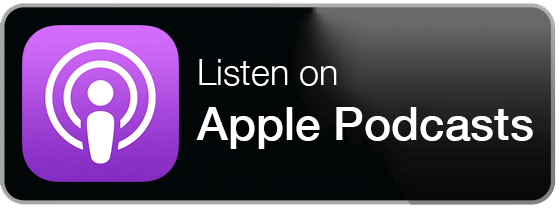Today’s Focus of Attention is reader-supported. We sometimes include products we think are useful for our readers. If you buy through links on this page, we may earn a small commission.
Have you noticed how the cost of a simple cup of coffee has increased over the years?
Inflation isn’t just an abstract economic term; it’s a daily reality that nibbles away at the value of every pound in your pocket.
Imagine filling your shopping basket with the same items each week, only to find the total creeping higher, even though your list hasn’t changed.
That’s inflation at work – stretching your budget and challenging your lifestyle.
As a matter of fact, an inflationary spiral chips away at your resources, particularly if they’re resting in low-interest accounts that struggle to keep up with the relentless pace of rising prices.
In today’s article, we’ll delve into how this silent adversary affects your hard-earned savings and arm you with strategies to shield your finances from the erosion of your purchasing power – an erosion that too often stems from turbulent economic policies, corruption, or the global dynamics of trade and industry.
“Inflation is the one form of taxation that can be imposed without legislation.” Warren Buffett.
Inflation Throughout History

“I do not think it is an exaggeration to say history is largely a history of inflation. Usually, inflations engineered by governments for the gain of governments.” Friedrich August von Hayek.
Inflation is not a modern-day phenomenon; it has ancient roots and contemporary repercussions.
Ancient Rome
- The first recorded instance was in Rome under Emperor Diocletian, who, in the 3rd century AD, faced soaring prices due to the overproduction of coins, leading to currency devaluation.
This fiscal occurrence was a response to the empire’s expanding economy, constant wars, and lavish spending, which needed more money than available precious metals could support.
This devaluation mirrors today’s quantitative easing measures, where more cash in circulation leads to economic decline if not handled as appropriate.
Diocletian tried to manage this crisis with edicts such as setting maximum prices for goods, which is one of the earliest known attempts at systematic price control (a failed effort), underscoring the complex nature of inflation.
It is reminiscent of modern government interventions in the economy, such as enforcing minimum wage levels or implementing cost ceilings on essential products.
The Netherlands
- Another historical instance was the infamous ‘Tulip Mania’ in the Netherlands during the 17th century, cited as one of the first recorded speculative bubbles.
Prices for tulip bulbs soared to extraordinary amounts, only to crash dramatically, illustrating the effects of market speculation on inflation.
The wild fluctuation in tulip bulb value echoes today’s volatile cryptocurrency markets, where rapid increases in value can be followed by sudden crashes, affecting cash depreciation and investment strategies alike.
Germany
- The 20th century witnessed hyperinflation in the Weimar Republic of Germany post-World War I, where prices doubled every few days, rendering the currency worthless and people needing wheelbarrows of Papiermarks for simple purchases.
This circumstance caused widespread poverty and unemployment, a loss of faith in the government, and contributed to the rise of Adolf Hitler and the Nazi Party.
- In the last 30 years, high and hyperinflation have been observed in countries such as Venezuela, Argentina, and Zimbabwe.
Venezuela
- During Venezuela’s economic meltdown in 2016, the bolivar depreciated so much that to buy toilet paper, Venezuelans needed to have a bag full of bills, which exceeded the volume of rolls they wanted to get.
For instance, in March 2020, the bolivar was worth 750 million times less than in August 2012, showing the extreme devaluation of the country’s currency over a short period.
The major causes were widespread corruption, price controls, nationalisations, and political instability.
Argentina
- In Argentina, high inflation has been a persistent issue for at least 20 years. In 2022, the exchange rate started at 109.48 pesos per dollar and ended the year 70% higher at 179.98.
The depreciation continued into 2023, with the currency conversion reaching 366.88 pesos per greenback.
Zimbabwe
- For Zimbabwe, the case was even more dire during its hyperinflation episode in the late 2000s.
The Reserve Bank of Zimbabwe issued currency in denominations as high as 100 trillion Zimbabwean dollars.
This $100 trillion note, put into circulation on 16 January 2009, holds the record for the largest face value ever printed on a banknote.
The out-of-control breakdown reached such extremes that the legal tender became worthless, leading to the abandonment of the ZWD in 2015.
“Inflation is as violent as a mugger, as frightening as an armed robber, and as deadly as a hitman.” Ronald Reagan.
How Inflation Affects Your Savings

If you were to compare your purchasing power from five years ago to today, what differences would you notice?
When inflation exceeds the dividends you earn on your savings, your money loses value in real terms.
For example, if you have £10,000 in a deposit account paying 1% interest per year, but the inflation rate is 3%, your cash will only be worth £9,700 after 12 months. Thus, you’ll buy less than you could before.
The longer you keep your wealth in a low-interest account, the more it loses value, affecting your financial goals or retirement plans.
How to Measure Inflation

Think about your previous shopping trip; did you spend more than you did last month on the same products?
The most common yardstick to calculate currency depreciation is the Consumer Price Index (CPI), which tracks the changes in prices of a basket of goods and services, representing the typical consumption of an average household.
This basket includes everyday items such as bread, milk, and fuel, as well as haircuts, public transit, and internet subscriptions.
The CPI is divided into several categories:
| Expense Category | Items |
|---|---|
| Food and Beverages | Groceries and dining out |
| Housing | Rent, mortgage interest, and property taxes |
| Apparel | Clothing and footwear |
| Transport | Car purchases, petrol, and collective transport |
| Medical Care | Health insurance, medical services, and prescription drugs |
| Recreation | Television, pets, sporting products, and hobbies |
| Education and Communication | School tuition, postage, and phone charges |
| Other Goods and Services | Personal care, funeral expenses, and tobacco |
In the United States, the Bureau of Labour Statistics (BLS) calculates and publishes the CPI; in the UK, it is the Office for National Statistics (ONS); and in the European Union, the organism responsible for collecting and sharing economic statistics is the Statistical Office of the EU (Eurostat).
| Country | Organization |
|---|---|
| United Kingdom | Office for National Statistics (ONS) |
| European Union | Statistical Office of the European Union (Eurostat) |
| United States | Bureau of Labor Statistics (BLS) |
Each month, researchers check the prices of these items and calculate how much the overall cost of the basket has changed. This change in cost is the rate of inflation. If the total price increases by 3%, then inflation is at 3%.
However, not everyone is the same. If you drive more than you take public transport or spend more on medical care than on eating out, your personal inflation ratio might differ from the official CPI.
That’s why it’s important to look at your own spending habits to understand how economic erosion is affecting you and which areas of your life could get more expensive.
How to Protect Your Savings from Inflation
To shield your purchasing power, check out these strategies:
- Compare different banks and seek out accounts offering interest rates higher than or close to the inflation rate.
Consider online financial institutions or credit unions awarding better percentages than traditional banks.
For instance, if your bank offers a measly 0.5% per year, far below the monetary devaluation of 3%, switching to a high-yield account offering 1.5% will preserve your purchasing power more, even if it’s lower than the withering worth of your currency.
Just bear in mind that money-growing accounts often carry penalties for early cash-outs.
- Have at least three to six months’ worth of living expenses saved as an emergency fund. Keep it in an account with quick withdrawals and no fees, if possible.
But this account may not pay much interest, so you should only save enough money for emergencies and put the rest elsewhere.
Let’s say your car needed major repairs. Your EF would allow you to cover the costs without going into debt.
- Invest in assets that increase in value or generate income when the cost of living goes up.
These include stocks, commodities, real estate investment trusts (REITs), and Treasury Inflation-Protected Securities (TIPS).
To illustrate, when inflation hits, your REIT holdings could benefit from increased rental prices and property values, offsetting the diminishing returns from conservative investments.
However, these assets come with risks and volatility, so you should have your portfolio balanced.
- Consider investing in index funds or exchange-traded funds (ETFs). They track the behaviour of a specific market index or sector, such as the S&P 500 or the Nasdaq 100.
They offer diversification, low fees, and exposure to a wide range of companies and industries that could profit from the deflating value of currencies.
Even if inflation fluctuates, your portfolio includes businesses that pass on higher costs to consumers, maintaining profitability.
But, as with any investment, they carry market risk and may not match the exact returns of their underlying index.
- Seek professional advice if you are unsure about how to invest or how much uncertainty you tolerate.
Consult a financial planner who might help you create a personalised plan for your goals and needs.
But the decision and the money are yours, so be careful.
“Inflation is the one form of robbery that can be carried out on a massive scale without the use of violence.” Thomas Sowell.
Final Thoughts
Inflation has been a constant throughout history, and it remains a reality you must navigate with care.
However, by understanding how it works and taking proactive steps to protect your money, you minimise its negative effects and maximise your returns.
Remember, knowledge is power.
Enhancing your financial literacy through various channels, such as insightful articles, educational videos, and interactive seminars, gives you the tools to manage and even capitalise on the currents of inflation.
Let’s embrace the lessons of history, the data of today, and the strategies that stand the test of time. By doing so, your savings not only survive but also thrive amidst the ebb and flow of commercial tides.
As you reflect on this information, what steps do you feel inspired to take to turn the tide of inflation in your favour?
We hope this article serves as a steppingstone on your journey to greater economic resilience. Your thoughts and perspectives are invaluable to us.
Please share your comments below and pass this post on to help others in your network strengthen their financial defences.


